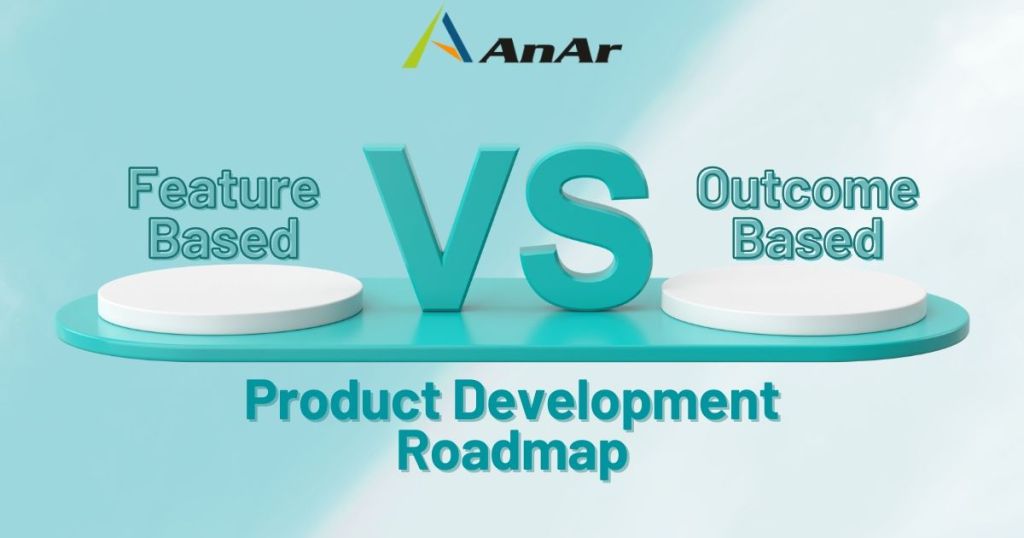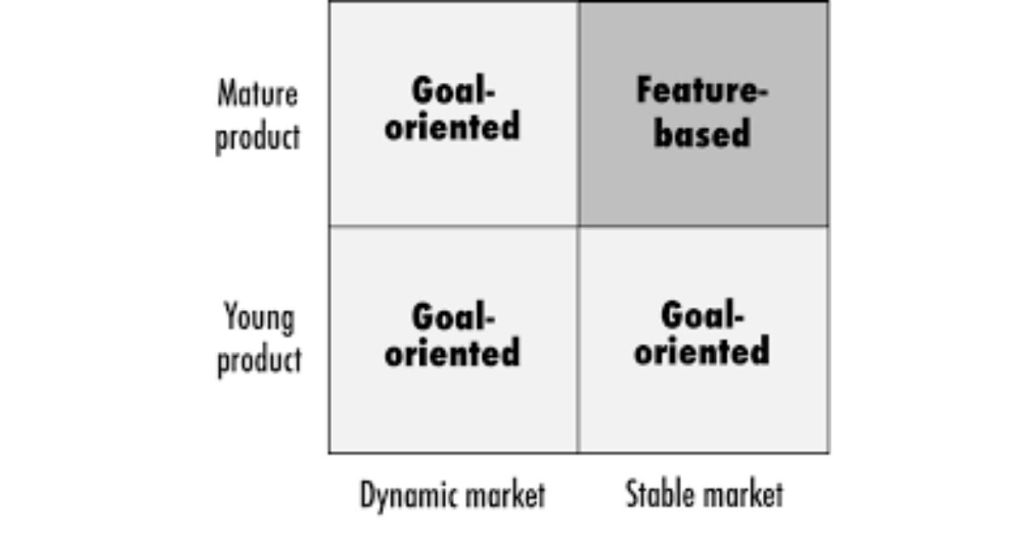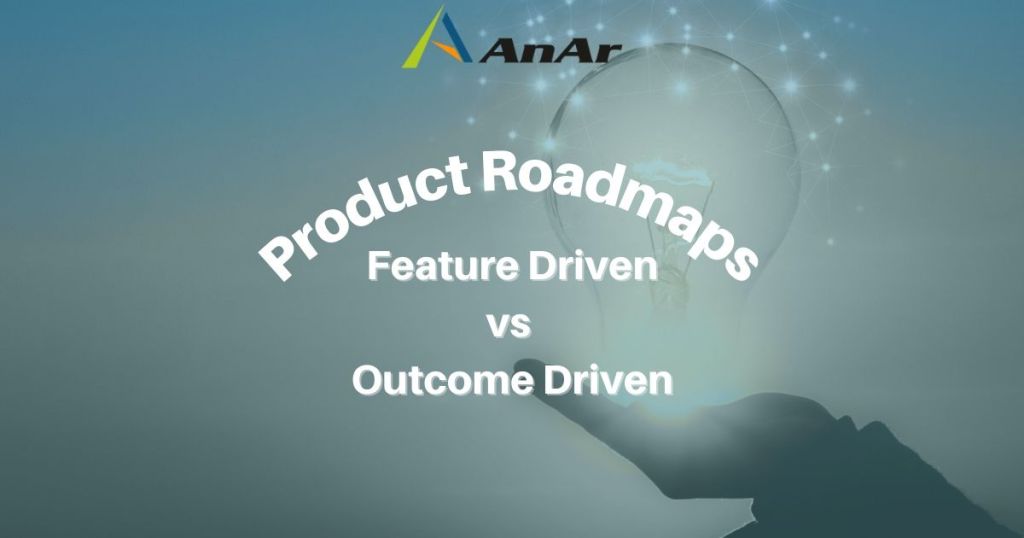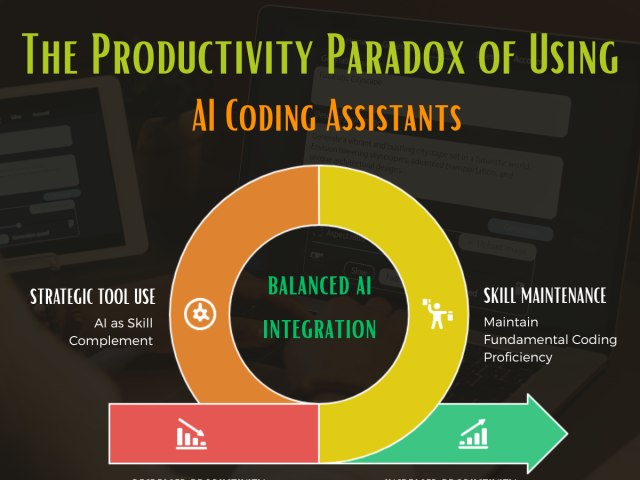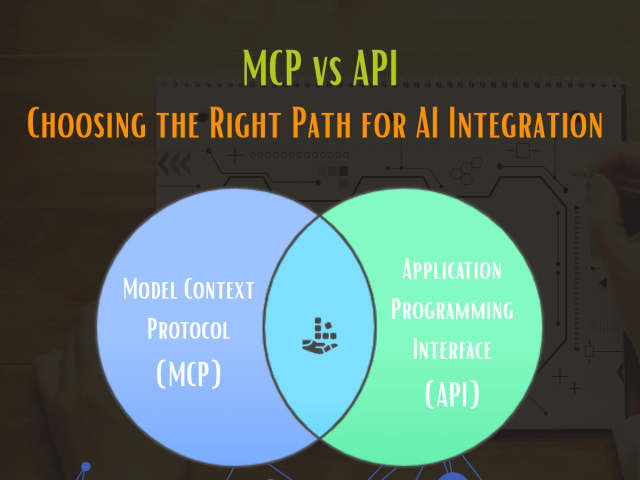A product roadmap is a crucial communication tool in any innovative organization. It serves as a direction and tactical plan that explains how your short-term product efforts align with your long-term organizational objectives. It serves as a shared source of truth that product owners may use to describe their products’ vision, upcoming features, goals, and progress. The product roadmap determines the communication standard, providing essential context for the team’s daily work. A mainstay of product development in the past has been the feature-driven product roadmap. Packed to the brim with features and improvements that, when viewed separately, don’t mean that much. In truth, these roadmaps frequently show no intended results. To address this problem, organizations have switched from feature driven product roadmaps to more outcome driven roadmaps to ensure that the product achieves the company’s and its users’ required goals.
In this article, you’ll learn about these critical points of the Product Development Roadmap.
- What are the troubles with the feature-driven product development roadmap?
- When to use Outcome Driven and when to go for Feature Driven Product Roadmaps.
- Adoption of outcome based Product Roadmaps.
- How to build an outcome driven product roadmap?
- How to become a better Outcome Driven Product Team?
First thing first —
What is a feature based product development roadmap?
You can monitor your project’s progress throughout the agile product development lifecycle with the help of a feature driven product roadmap. It facilitates charting how your product evolves and demonstrates how each feature interacts with others.
These roadmaps help you concentrate on how various feature components — such as Upload Images or Automated Email Trigger — build upon one another to enhance user value. Using a feature driven product roadmap, you can also determine how to allocate resources among several concurrent projects. Everyone working on the project will realize right away why one team needs more time to finish their tasks and how their efforts affect the project’s overall success. This visibility makes communication with essential stakeholders across your squad much more straightforward.
What are the troubles with the feature driven product development roadmap?
Undoubtedly, many product roadmaps are nothing more than lists of features. Teams frequently face pressure to build all these features because they are typically laid out on an ambiguous timeline and don’t always solve the correct problems.
As a result of the feature based roadmap, product managers find themselves in a situation where almost all features get completed within the anticipated time frame. Still, key performance indicators are in the wrong direction. Teams can frequently persevere in completing the list even when features aren’t meeting expectations.
Boiling down to the core of problems, we can say these two things about feature driven product development —
- Because feature driven road-mapping uses a predetermined prioritization method, it is not responsive to the business’s objectives or the market’s needs.
- These roadmaps are based primarily on customer requests since they frequently focus on the surface-level needs and desires of customers, encouraging the development of features to address only those needs and wishes.
What is an outcome-based product development roadmap?
Outcome based product roadmap focuses more on the “why” than the “what” of a product goal. The idea is to ask, “Why do we want to improve the product?” rather than concentrating on output and deliverables. Here, we should focus more on the specific outcomes and goals. It can boost overall engagement with a particular service offering, acquire more users, or generate more revenue by focusing on conversions.
It’s critical to give up the features and begin concentrating on the core issues:
- We should focus on outcomes than features.
- We should emphasize how the end user feels about a service delivery feature.
- We should shape the product based on what we want our customers to achieve.
Using this strategy, your team can take ownership of the issue rather than being forced to deliver on a list of features.
The Outcome Driven Mindset
The mindset of an outcome driven product gives your teams more autonomy and promotes knowledge sharing. As opposed to when a specific feature is released, you’ll know more clearly when you resolve an actual customer problem.
You’ll be able to realize a broader range of possibilities and attain better context for particular items on your product roadmap and their priorities.
With clarity on outcomes, you can capture every necessary step along with the reasons. When the cause is clear, you avoid unnecessary steps, and the desired results are easier to measure.
When to use Outcome Driven and when to go for Feature Driven Product Roadmaps?
Choosing a roadmap is a game based entirely on context. A feature based product roadmap will indeed work if you are working with a highly developed product in a stable market.
Feature based roadmaps are used about three-quarters of the time in the wrong context, assuming we are working in a more straightforward ecosystem. We often launch our products in a dynamic market full of competition, change, and ambiguity.
So practically, we must go for an outcome-based product roadmap three out of four times.
The diagram below by Roman Pichler clarifies when choosing a feature driven is practical and when to adopt an Outcome Driven roadmap.
Steps to building an outcome driven product roadmap
Any outcomes you implement must be measurable and obvious to your stakeholders and clients as something of value, just like your overall goals.
For instance, it is of no value to them to concentrate on an outcome such as “the shopper receiving more marketing emails.”
Let’s, therefore, review some essential steps you can take to create an outcome driven product roadmap.
Step 1: Make sure you correctly align your product vision, goals, and strategies
You should clearly express your product’s vision, strategy, and goals in a solid product roadmap. They must be understandable and bring your team together around a single goal.
Consider the long-term results and benefits you must provide your customers as you carry out this task. And bear the following in mind when developing the product vision and strategy:
- Market insights and current trends in technologies.
- Business intelligence and customer insights.
- The business model of your organization.
- Outcomes you want to accomplish in the short and long term.
It’s time to turn your product vision and strategy into clear goals after you’ve solidified them. These goals should reflect the results you want your customers or product to experience while also assisting you in setting priorities for which features to work on next.
For example,
while setting a goal of “Increasing overall bookings of flights to Monaco on the flights booking section,”
we should put a result of “Bookings to Moncao increase by 9% by the end of the second quarter.”
Step 2: Start prioritizing the features based on desired outcomes
You have come together around your primary goals, strategy, and vision. It’s time to prioritize the features in the product roadmap.
The amount of information you’ll be managing while balancing stakeholder needs during this stage, from customer insights and date-based milestones to your team’s capacity, can be a little overwhelming.
At this point, customers can be a great source of feedback, but remember that their recommendations might not solve the underlying issues. However, going through this stage will assist you in shifting your attention from the “how” to the “why.”
Step 3: Make a product roadmap to help you communicate your features
It’s time to sketch the roadmap, which must explain the features and products you’re developing. It should detail:
- All the planned product features.
- Completion timeline of each part.
- Rough estimates of release dates.
- Why some features are a priority over others.
Our product roadmaps should concentrate on the problem space (missions, themes, problems to solve, outcomes) rather than the solution space (features).
What specific results do we want to achieve, and how will we know when we’ve accomplished them? Timelines are still crucial, of course. But it’s vital to concentrate on timeframes like yearly, quarters, or “Now, Next, Later.”
To create an outcome based Product Roadmap, C. Todd Lombardo suggests the following straightforward flow:
- Gather Inputs
- Organize and Prioritize
- Place into timeframes on your roadmap
- Map to sprint or release plan
He advises organizing your inputs — research, customer service, and sales — into strategic Themes, using the timelines “Now,” “Next,” and “Later” for your roadmap, and associating an OKR (Objective & Key Result) with each theme, measuring every composition. Then it would help if you mapped them to the release plan.
Set reasonable expectations for when features will be released so that other teams can plan accordingly. Your teams need to be fully aware of the precise strategic context of the features you build. As a result of an improved understanding of the decision-making process, you can significantly reduce stakeholders’ concerns.
Step 4: Encourage your team to follow the product roadmap
Now is the time to present your outcome based product roadmap and empower your team by giving them all the knowledge they need.
Make sure that roadmap is accessible to each member of the product team, and everyone included in the product life cycle.
Of course, outcome driven product roadmap comes with many benefits, like broad timelines, and they can meet the needs of varying stakeholders and senior executives. If applicable, ensure they contain market opportunities and profit and loss information.
How to become a better Outcome Driven Product Team?
The most successful product teams evaluate their performance based on outcomes rather than output or how quickly and how much they can achieve with the release of new features.
Here are some strategies for refocusing your attention on what is assisting customers while also enhancing your company.
Defining Long-Term Success
We should focus our product on enhancing important customer outcomes. In other words, your objectives should reflect how customers measure your product’s value.
It would be best if you used leading indicators and product KPIs to segment a key outcome further and provide a more focused view for individual product teams. Once these KPIs have been established, include them in your product metrics dashboard, make it internal, and regularly review it to identify and address trends. Doing this will link these metrics to ongoing decisions in your team’s work and provide transparency about your progress.
Encompass in Planning
The outcome KPIs should be linked to your strategic planning rather than existing in a vacuum. Your plans should include activities related to your outcome KPIs, whether multi-year visions, annual operating plans, or quarterly objectives and key results. A product management framework would entail using these as the foundation for imagining 10x outcomes, strategically planning backward, and developing a roadmap centered on your objectives.
Quantify Feature Targets
A proper alignment exercise as each squad launches a new feature is to eloquently list the primary factors supporting why it has to be prioritized and how you will evaluate its success:
- What problem is it meant to address — Features are made with a purpose in mind. It is simpler to understand why something is being done when it is seen in the context of a significant customer need or opportunity. Furthermore, it emphasizes resolving this problem rather than just introducing a predetermined feature.
- The hypothesis for how that will be done — You rarely know for sure whether changing a feature will be successful. What you actually build is an expression of a hypothesis based on your knowledge of the needs of the customer and your evaluation of the products. Putting it in this context serves as a reminder that it might not be sufficient. If that occurs, iterations and other options can be taken into account.
- Your idea of quantifiable achievement — The objective here is not perfection. Still, you will get better with practice and the accumulation of internal data benchmarks. Your learning rate from each change is also increased when you compare actual results to your estimates.
Final Wrap-up
Remember that a product roadmap is a living document that must adapt to changes as they occur. Having multiple versions is acceptable if you know who your audience is. Even so, you might still need a feature driven roadmap, particularly for more urgent things. This type of roadmap can ensure since the sales and customers will require different information than engineering and may need to know precisely when you’re delivering certain features.
On the other hand, your internal development team benefits significantly from the outcome driven roadmap because it enables you to bring clarity and focus. Instead of just adding new features on top of existing ones, it’ll probably result in maximizing their impact. Additionally, it might enable you to discontinue some features that are trying to obstruct your customers.

